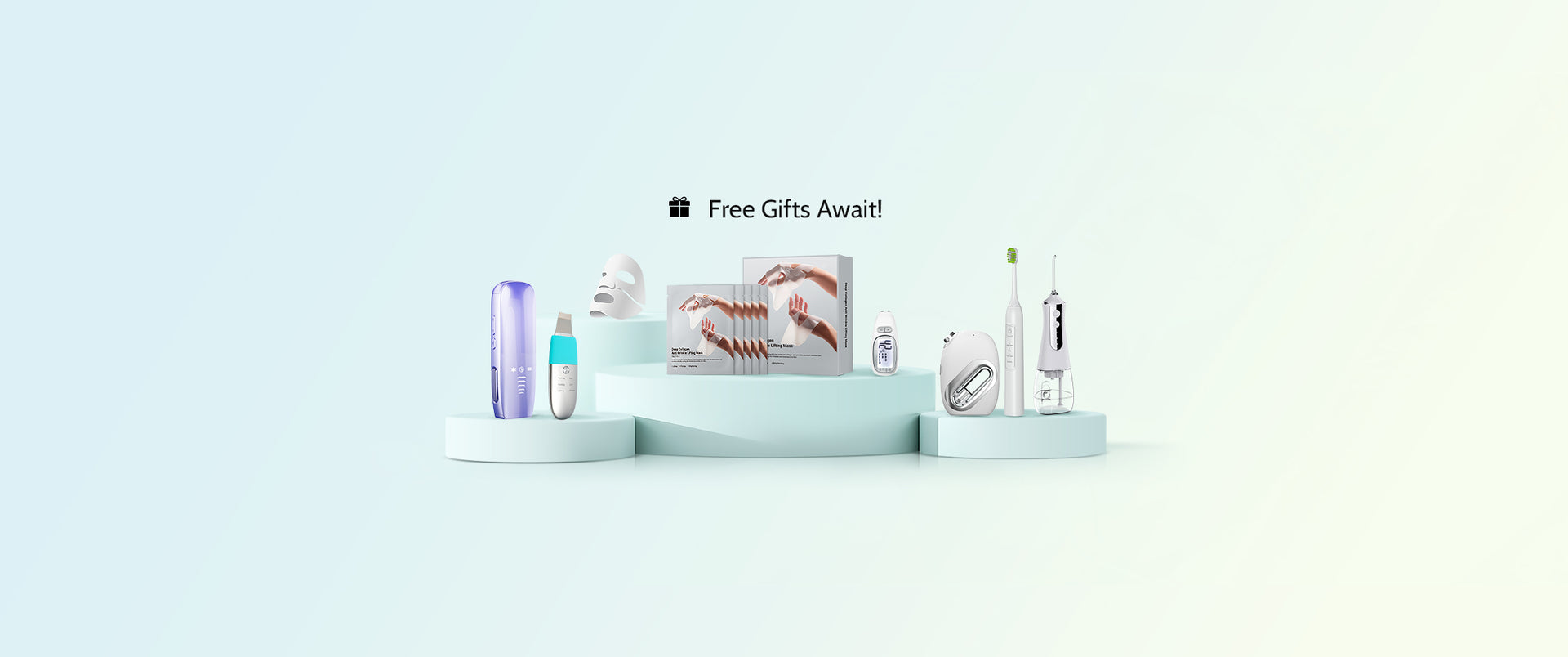When it comes to IPL (Intense Pulsed Light) hair removal, many believe that more pain equals better results. But this is a misconception. Numerous users of home IPL devices report minimal discomfort while achieving impressive results. Does less pain mean the device isn’t working? Let’s dive deeper into IPL technology, pain factors, and how you can achieve great results with less discomfort.
How Does IPL Work?
IPL (Intense Pulsed Light) uses a broad spectrum of light to target melanin in hair follicles. The light converts to heat, damaging the follicle and inhibiting regrowth. As Ablon (2018) explains, “IPL treatments reduce hair density by up to 80–90% with consistent use over several months” (The Journal of Clinical and Aesthetic Dermatology, 11[2], 21).

Why Do Some People Feel Pain While Others Don't?
Pain tolerance can vary greatly between individuals. Factors like skin sensitivity, hair thickness, and the area being treated can all influence how much discomfort someone feels. For example, the bikini line or underarms are often more sensitive than the legs or arms, which is why you may experience more pain in those areas.

There's also a common misconception that more pain equals better results. However, pain doesn't necessarily correlate with effectiveness. Higher energy levels can lead to more discomfort, but that doesn't always mean better results.
Pain or discomfort during IPL treatment often stems from high energy settings. Studies suggest that 2–5 J/cm² is sufficient for effective hair removal while minimizing discomfort (Goldberg, 2012). Excessive energy levels, exceeding 8 J/cm², can lead to burns or skin irritation. Rxmoore IPL device operates at a calibrated energy of 3.8 J/cm², striking the perfect balance between effectiveness and comfort.
“Optimal energy levels for IPL hair removal are between 2–6 J/cm², ensuring efficacy while reducing adverse effects.”
(El-Domyati et al., 2018, Lasers in Medical Science, 33[1], 193–199)
Is It the Energy Level or the Shaving Process That Affects Pain?
Using IPL on unshaven skin can cause the light to target surface hairs, creating a burning sensation. Clinical guidelines recommend shaving immediately before treatment for the best experience (El-Domyati et al., 2018) Leaving stubble can result in discomfort and even skin burns.

Pain and the Role of Cool Down Features in Home IPL Devices
Devices with cooling functions, like Rxmoore, provide a spa-like experience, ensuring the process is virtually pain-free.
Stick to a Schedule
Consistency is key. Regular weekly treatments for 12 weeks yield the best results, with significant hair reduction after just a few sessions.
Why Choose Rxmoore IPL?
Proven Effectiveness: Clinical studies and user reviews show that the Rxmoore IPL device significantly reduces hair regrowth, with many users seeing results after just a few treatments.
Cost-Effective: Unlike professional salon treatments, which often require expensive follow-up sessions, home IPL devices like the Rxmoore only require an initial investment, saving you money in the long run.
Convenience: With the ability to use it at home, you can fit IPL treatments into your schedule without the need for appointments or travel.
Final Thoughts
Pain is not an indicator of effectiveness when it comes to IPL hair removal. By understanding the factors that contribute to discomfort and choosing a device like Rxmoore, you can achieve professional-grade results from the comfort of your home.
References
Ablon, G. (2018). Phototherapy with light emitting diodes: treating a broad range of medical and aesthetic conditions in dermatology. The Journal of Clinical and Aesthetic Dermatology, 11(2), 21.
Goldberg, D. J. (2012). Current trends in intense pulsed light. Journal of Clinical and Aesthetic Dermatology, 5(6), 45–53.
El-Domyati, M., El-Ammawi, T., Moftah, N., & Nasif, G. A. (2018). Hair removal with intense pulsed light: A clinica





